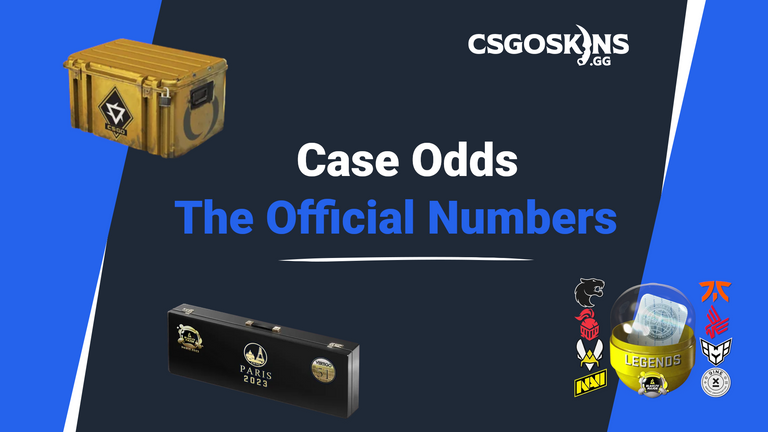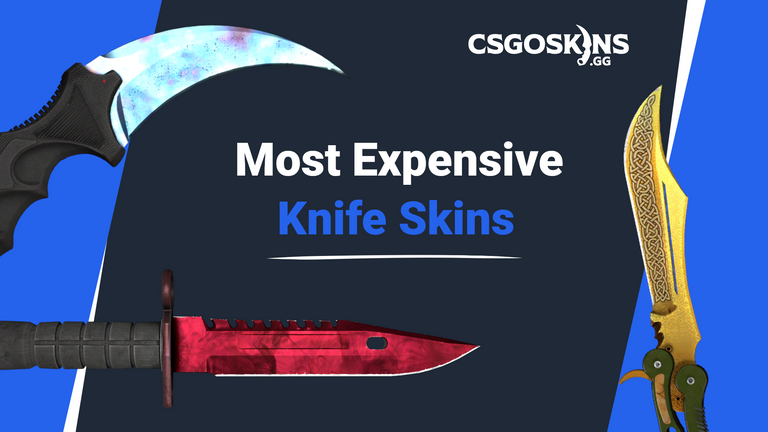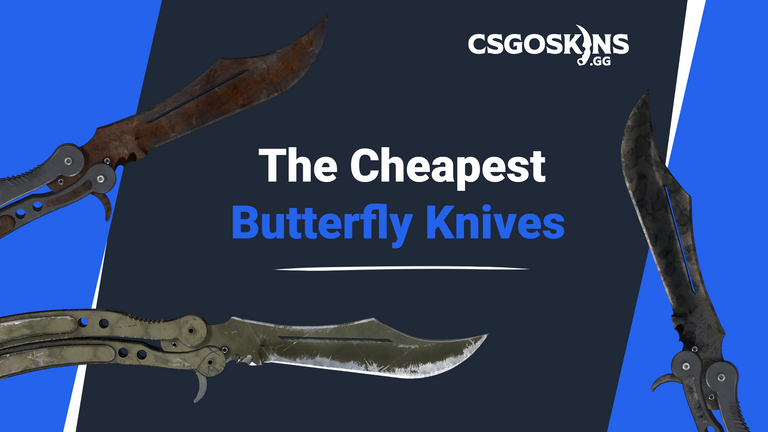How To Surf In CS:GO - The Ultimate Surfing Guide


Counter-Strike: Global Offensive is currently the top game on the Steam platform with the highest number of concurrent players exceeding 1 million. What makes this achievement even more praiseworthy is the fact that the game has managed this despite being more than a decade old and facing tough competition from new game releases by top publishers in the industry. A large part of this success definitely stands as a testament to the dedication and hard work put in by Valve to keep the game updated, resolve issues when they arise, test new concepts, and push boundaries of what can be achieved.
However, in an equal measure, one should also mention the dedication of the player community which has stood by this game from its inception till now, through each high and low. The community has worked towards providing inputs for the game, made thousands of contributions in skin and map designs to the Steam Community Market, and come up with unique mods which have provided a totally unique and fresh playing experience from the established modes. One such innovation going back to the days of Counter-Strike 1.6 was the development of a new mod that came to be known as surfing. The mod quickly gained prominence and adapted to each new iteration of Counter-Strike which came later. Currently, there is a huge player base in the community that is solely dedicated to surfing. These groups have been organizing tournaments, creating maps, surpassing new challenges, and setting world records for fastest times on different maps.
If you have been following the CSGO scene on YouTube anytime in the recent past or currently, you may have noticed a few CSGO YouTubers using a background where their cameras seem to be floating around on maps following a triangular-shaped wall in the middle. You also might have had a feeling of calmness wash over you as you saw the camera move from one wall to another so effortlessly, going through beautifully crafted maps. These are the surfing maps we talked about earlier and the floaty movement is what is popularly known as surfing. Now you might be wondering how you can start surfing yourself, and we are going to be doing precisely that in this article. We will provide all the help you will need to learn the necessary movement skills, tips to help you get better, useful console commands, and some of the best maps for this mode. Whether you want to learn surfing to use in your video backdrops, merely as a fun pastime, or to improve your overall movement skills, we have you covered.
A word of caution though before we jump into it… although surfing does seem very calming, learning how to do it as effortlessly as you see the professionals doing it takes a whole lot of patience, dedication, and hard work.
How To Surf In CS:GO
An important lesson you must consider before we begin teaching you how to surf is that your movement skills will have to be completely rewired. You may initially be uncomfortable with this and start to feel frustrated but must consider the fact that this is a completely new game mode that requires unique skills. You can, however, find some comfort in the fact that whatever is learned here will transfer over to your competitive matches, and substantially help in improving your overall movement skills.
1. The Objective
The triangular structures you see players gliding on in the middle of the map are called ramps. Surfing involves landing on the first ramp, and then traversing the map by moving from one ramp to the next while avoiding or going past obstacles to reach the end. Although the objectives may vary across maps, this is the most common one.
2. Boarding The Ramp
When the round begins, you will find yourself on a platform with the first ramp right ahead after a small gap. The first step to start surfing involves jumping off of this platform onto the ramp. Make the jump, and try to land close to the top edge of the ramp. Just make sure you remove your finger from the forward button (default ‘W’) after the first jump and do not press it again throughout the duration of the surf. Initially, this part will be the hardest to come to terms with, as you most likely won’t be used to it prior to surfing. Once you’ve made the jump, it does not matter which side of the ramp you land on, as long as it’s towards the top edge.
You might now be wondering how you’re going to move forward if you won’t even be pressing the key for it. This is where a game mechanic and some console commands will come into play, which we’ll cover ahead. After landing on the ramp, the goal is to build as much momentum, or speed, as possible, before moving on to the next one, where the cycle repeats.
3. Strafing
Immediately after landing on the first ramp, you have to start pushing against the wall to keep the forward sliding momentum going. This is done by pressing the Move Left key (default ‘A’) if you land on the right side of the ramp, or the Move Right key (default ‘D’) if you land on the left side.
Basically, the game mechanic in question here is the sliding mechanic which has been modified particularly for surfing, and further exaggerated by console commands. If the ramp had a horizontal plane as normally found in the other game modes, the slide mechanic would not have worked and your character would only have been able to move forward using the W key. The slanted walls of the ramp ensure that your character moves forward by a pushing motion into the wall after you press the corresponding key for a particular side as mentioned above.
Next, keep your mouse steady and pointing straight ahead in the direction you want to go. Moving it here and there will cause you to lose momentum and fall off the ramp. The most effective method of building speed on a ramp is to ride it like a wave. When you land on it, make sure it’s towards the top edge. As you move forward, keep coming down towards the bottom edge around the midway point of the ramp, and then start to go again towards the top edge till you exit it.
However, it’s important to point out that although the above method is effective for ramps that are straight, there is a slight difference that must be implemented when strafing curved ramps that change direction. We will elaborate on this with an example. Let’s suppose you are surfing a ramp that has a bend or curve to the right side, which then straightens out again, with you on the right side wall of the ramp as well. In this instance, you will initially be strafing normally by pressing the A key, but as soon as you hit the bend, switch to pressing the D key for the duration of the bend, and then back to pressing the A key as soon as you exit the bend and the ramp straightens out again.
4. Turning
After exiting a ramp and having built momentum from the previous one, you will find yourself moving forward in the air headed towards the next ramp. At this point, you need to be strafing while in the air. Strafe in the direction of your turn by pressing the A (left) or D (right) keys, while moving the mouse in that direction as well. Again, once you have landed on the next ramp, make sure that it is near the top edge and follow the same pattern for strafing as mentioned earlier.
A point to remember here is that if you are going from one side of the wall to another, you have to press the correct strafe key once you land. For example, if you were on the right side of a ramp, you would have been pressing the A key. If the next ramp requires you to land on the left side of the wall, you air-strafe as mentioned, but as soon as you land on the next ramp, you have to press and hold the D key to keep the momentum on the left side, and vice versa.
And this is basically it. These are the basic techniques you have to utilize in order to get through the maps. As you become better, it will become easier to incorporate them quickly in succession and maintain your flow. Once that level is achieved, you can then progress to more advanced maps as well.
Tips To Improve Your Surfing Skills
Now that you have a basic understanding of how to surf, you can also incorporate some of the tips mentioned in this section to further improve your skills.
-
Make sure your mouse sensitivity is set to low to make air-strafing and movement more controlled. Fast, jerky mouse movements will only hinder your airspeed and make you lose precious momentum.
-
Surf maps have varying levels of difficulty signified with a tier level, with tier 1 being the easiest and tier 8 maps being the hardest. It would be wise to start at easier maps first, and slowly progress to more difficult ones. It would be even better to stick to one map initially for practice until your skill level increases over time.
-
Pressing the Move Backwards key (Default ‘S’) will stop your movement completely and cause you to fall. This is only useful when the next ramp is below your position and you need to fall downwards to get to it. To position yourself correctly or avoid obstacles, use the mouse to air-strafe for the best results.
-
If you are finding it difficult to make it to a ramp despite doing everything right in terms of generating momentum, try moving the mouse from side to side quickly while air-strafing for a further boost.
-
It is not necessary to land on every ramp on a particular map. The objective is only to reach the end, and as quickly as possible if you are doing a timed run. If you have enough momentum, there is a possibility that you might be able to skip one or more ramps, and that’s fine.
-
Practice makes perfect. Keep surfing till it becomes second nature.
Useful Surfing Console Commands
To use the console commands for surfing, make sure you have the developer console enabled. You can do this by going into the Settings in-game, clicking on the Game settings tab, and then selecting the ‘Yes’ option for Enable Developer Console. Once that’s done, use the (~) tilde key to access the console, and type the following console commands to get started:
| Console Command | Description |
|---|---|
| sv_cheats 1 | Start off by entering this command first. Without it, the ones that follow won’t work. |
| bot_kick 1 | This kicks any bots present on the server/map. |
| sv_accelerate 10 | This command determines your acceleration rate while moving, with 10 being the most commonly used value, and 5.5 being the default. |
| sv_airaccelerate x | Allows you to change the rate of acceleration while in the air. All you have to do for it to work is replace the x with a value that could be anywhere from 100 all the way up to 1000. Lower values increase the level of difficulty for surfing, while higher values make it much easier. You can try decreasing this value in increments of 100 to ramp up the challenge as you become more proficient over time. |
| sv_staminajumpcost 0 | Disables the default jump penalty applied in the game. |
| sv_staminalandcost 0 | Disables the default movement penalties applied in the game after landing from a jump. Setting it to 0 means that your speed will not be affected. |
| sv_staminamax 0 | This command determines the maximum stamina penalty which can be received. The stamina penalty does not go beyond the default value of 80 once it has been reached, but when it is set to 0, no penalty is incurred. |
| sv_enablebunnyhopping 1 | This command will enable bunnyhopping in the game by removing the maximum air velocity speed cap, allowing you to bunnyhop very fast. |
| sv_autobunnyhopping 1 | After enabling bunny hopping, this command will allow you to bunnyhop as long as the jump key (default: Spacebar) is pressed. |
| mp_roundtime 60 | This command extends the round time to an hour, with 60 minutes being the maximum that time can be extended, and works only on your own servers. This gives you plenty of time in a round to get your practice session going. |
| mp_warmup_end | This command ends the warmup time for the round so that you can start right away with the annoying wait. |
| mp_restartgame 1 | Finally, use this command to restart the map so that the rest of the command changes take effect as well. |
Surfing Maps
Now that you have a good grasp of the surfing fundamentals, it’s time to put what you’ve learned to the test.
Types Of Surfing Maps
There are two different types of surfing maps which are described below:
1. Skill Surf Maps
These are the most popular types of surf maps among the community and the most regularly played. The objective of these maps is simple…to surf from the starting point of the map all the way to the finish line.
2. Combat Surf Maps
Combat Surf Maps exist with the added element of being able to shoot it out with other players. However, these are not as popular as the regular surf maps since players usually prefer keeping gunplay for Deathmatch or Competitive modes.
The Best Maps For Surfing
We have carefully selected some of the best maps for your surfing journey, a few of which are beginner friendly and will allow you to learn the ropes without being overwhelming. Clicking on the map name will take you to that map’s page on the Steam Workshop, where you can subscribe to it. This will download the map to your Steam client, where you can choose to play it offline as well. In no particular order, here are the best surfing maps that we believe you should definitely try out first:
1. surf_beginner
As the name suggests, surf_beginner is an ideal map if you are just starting out this game mode, and comes highly recommended by the CSGO surfing community. It is probably the best map for honing your basic surfing skills such as jumping from one ramp to another, strafing, maintaining speed, and crosshair movement. The map is easy to get the hang of and gradually ramps up the challenge as you progress through the different stages.
2. surf_kitsune
The map surf_kitsune is one of the oldest and most well-known surfing maps to ever exist, released all the way back in 2014. It has a unique aesthetic, unlike other maps, with a completely black background and all objects drawn in a wireframe-type design that changes colors with each new level. The map features 9 different levels, with progressive levels of difficulty. We forewarned though, you should have some level of surfing proficiency before trying this one out, or you may end up being humbled fairly quickly.
3. surf_mesa
The surf_mesa map is another legendary name in the hall of fame when it comes to surfing. The map is reminiscent somewhat of the introductory train ride to Black Mesa in the original Half-Life game, with similarly textured rocky formations which form the hallways. The ramps are beautifully designed as well, with gray tiling and turquoise-lit edges. Mesa is one of the more advanced maps which is aimed toward proficient surfers. This is evident from the fact that there are no checkpoints at any stage, and in case you fail, you have to start all over again from the beginning.
4. surf_utopia_v3
The surfing map surf_utopia_v3 has continued to gain prominence over the years, despite being one of the earliest ones to be released only a year after CSGO came out, in 2013. The map has a very calming zen-like vibe to it, accentuated by the beige theme of the wall and ramps, with orange lines highlighting the surface edges. The lighting throughout seems mellowed out, with certain areas being slightly brighter as if the evening sun was shining on them. The map provides an adequate challenge to all levels of players and is often seen being used in the backdrop of videos by YouTubers making CSGO content.
5. surf_summer
As the name reveals, surf_summer is a themed map taking inspiration from the beach and it’s many related activities. It has multiple levels, with each being progressively more difficult. The map was designed in collaboration with the Fnatic team, as a way for them to promote their new summer line This is why you will see their team logo in multiple places, in case you were wondering. It is a great-looking map to get that summer feel while you surf around, catering to all levels of players.
6. Surf for Points I
Surf for Points I is a futuristic-themed map that has multiple iterations signified by a Roman numeral at the end starting from I(1) all the way to V(5). Each map is intricately designed and is beautiful to look at as well. The Surf for Point map introduces a unique concept of a point-based system to surfing, as is evident from its name. Points are accumulated by collecting tokens of varying significance on the map while surfing, each of which carries a different weightage. For instance, the Diamond tokens are the most valuable, netting 5 points for each one collected. Overall, this map presents varying levels of challenges, which makes it a good map to try out for both new players as well as experienced ones.
Tip: You can also search for other maps on the CSGO Community Workshop to see if any particular map appeals to you more than the ones we have mentioned here. There are a ton of distinct and beautifully designed ones that can be found, and you can check them out by searching for surf maps in the search bar.
Starting a Surf Session
If you have already downloaded the maps following the method outlined above, you can then decide to play in offline mode or join a community server to surf alongside other players. To make it easier, we have outlined the steps you can take for whichever option you choose.
1. Playing Offline
- Launch the game.
- Click on the play button on the top left of the main screen.
- Click on the dropdown at the top of the screen (usually set on Official Matchmaking) and select the Workshop Maps option.
- Surf Maps you have subscribed to on the SCM will show here.
- Select the Surf Map you want to play and click on the green Go button at the bottom.
- Once the map has loaded, open the Console (make sure you have enabled it in the Game settings).
- Enter all the commands mentioned in the Console Commands section of this article.
- Surf away.
2. Joining a Community Server
- Launch the game.
- Click on the play button on the top left of the main screen.
- Click on the dropdown at the top of the screen (usually set on Official Matchmaking) and select the Community Server Browser option.
- A list of servers will pop up.
- At the bottom of this pop-up page will be a search bar where you have to type surf.
- This will bring up a list of all the servers that are currently active.
- Sort the servers by the highest number of players to get an idea of the most popular ones, and select one.
- Click on Connect and start surfing.
Concluding Remarks
Surfing can be a great way to relax from the daily grind of competitive matchmaking once you get the hang of the basics. We hope the methods and tips outlined in this article will provide you with a sound understanding of the various surfing concepts, allowing you to delve into this completely distinctive game mode and have a great time while you’re at it. Surf’s up!


